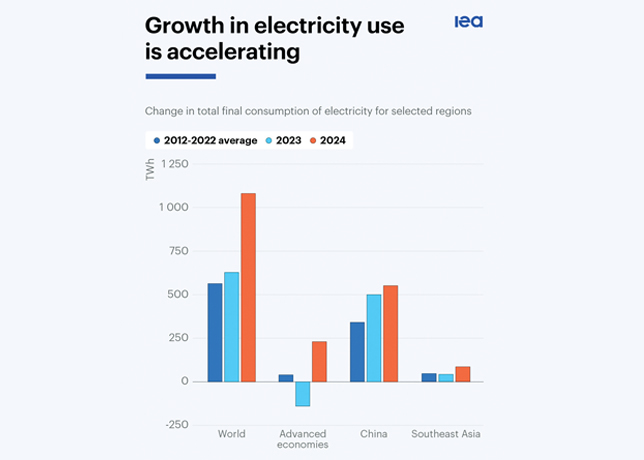

The global electricity demand is rapidly increasing, with the International Energy Agency (IEA) revealing a 4.3 per cent increase in power consumption in 2024. Factors driving this surge include record global temperatures, rising power consumption from industry, electrification of transport, and the growth of data centers and artificial intelligence. Advanced economies experienced a resurgence, while emerging and developing economies saw robust increases in electricity demand.
Despite the growth in renewable energy, fossil fuels accounted for nearly 60 per cent of global electricity generation in 2024. Coal remained the largest source, contributing 35 per cent of total generation, particularly in large emerging and developing economies. Natural gas followed as the second-largest source, providing over 20 per cent of global electricity for over two decades.
Renewables and nuclear power contributed significantly to the growth in electricity generation last year, with renewables such as solar photovoltaic (PV), wind, and hydropower accounting for 32 per cent of total generation. The record investment in renewables and strong international interest in expanding nuclear power signal continued growth in these sectors in the coming years. Renewables are projected to surpass coal-fired generation this year, pushing coal's share of the power mix below 33 per cent for the first time in a century.
Current trends indicate that low-emissions sources are expected to expand quickly enough to meet all of the growth in global electricity demand through 2027, marking a significant milestone in the transition to a more sustainable energy landscape. As global demand for electricity continues to rise, the energy sector is poised for transformative changes that will shape the way we power our world.










































































